Tushar BurmanNov 19, 2020 11:50:53 IST
Long story short, I’ve never been the biggest fan of Royal Enfield motorcycles, even though I learned to ride on one. Sure, it was big, burly and entirely different from the rest of the econo-commuters available in India when I was coming of age, but that wasn’t saying much. When it came time to buying my first bike – a critical time of flux for me personally – it was a toss-up between a Machismo and the fast, dangerous, economically suicidal RD350. With all that was going on in my life at the time, I didn’t want to compromise. I wanted what I wanted. I bought the Yamaha, met a girl, married her, met many credit cards, spent them all on the bike and twenty years later, the story continues. Well, mostly.
The Meteor 350 that I’ve been riding is the successor to the Thunderbird, which was by all accounts, a great success for Royal Enfield. To me, however, it was a bit awkward, pretending to be something it was not – a proper cruiser. From the spy shots that have been floating around the Internet, the Meteor looked much the same, but I’m happy to say that it isn’t. Not by a long shot. Unlike previous models from the legendary manufacturer, the Meteor only borrows an old marque; everything else is quite new.
Royal Enfield is cool (again?)
The myth, aura and credit due to Royal Enfield motorcycles, frankly, are a product of fortuity. The Bullet tugs at the heartstrings because it has always been there. It has endured nearly unchanged for half a century, and even the most Vulcan of rational thinkers would succumb to nostalgia when talking about that old 350 or 500 their uncle/friend/lover had at some point. But in the last decade or so, there’s been a sea-change in the way the company looks at, and projects itself. Walk into a Royal Enfield showroom and it feels like a lifestyle brand. The apparel and gear are carefully curated, and go with the ethos of their retro/classic motorcycles. As does the dapper CEO, who made the pitch for the new bike in a cinematic video shot while he rode the bike in bright red gloves and boots. The film too had the right tone, look and messaging. It feels aspirational, not agrarian.
That’s not to say that RE has gone so far upmarket as to lose touch with the machismo that they so incite. On my way home with the bike, I was accosted by two lorry and one rickshaw driver, all of whom knew that this was the Meteor and it was to be launched on the sixth of November. Enfield comms department: take a bow.
The Meteor 350 is an all-new motorcycle
Knowing Royal Enfield’s history, it is hard to stress this enough. The company is steeped in tradition, and that can hold things back against the march of progress. But time carries on, and with it have come many sweeping differences in the new motorcycle. The Meteor uses a new frame, an entirely new engine, new switchgear, lighting, ergonomics and tech. India’s strict BS6 emissions norms have meant tectonic shifts in the Indian automotive space, and 2-wheelers are no exception. The new 349cc motor forms a strong base for what is likely to be a raft of future motorcycles. Gone are pushrods, replaced with a single overhead camshaft. Primary drive is now geared, there’s a balancer shaft to keep things smooth and the gearbox is slick and traditional (with a shifter on the left side).
The frame has two down-tubes now, cradling the motor, but not quite. The engine is not a stressed member of the chassis. Suspension is traditional, but beefy. 41mm forks up front, with twin shocks at the back. The rider triangle is laid back, with forward-set footpegs that put your weight roundly on your bum, and the torso in a tall, commanding position.
If you don’t know what all this means, think of it this way: the old Enfields felt like a coalition government, while the Meteor 350 feels more like a benevolent dictatorship. Things are tight and run together as a unit. It feels like any other motorcycle, with no excuses needed about ‘character’.
A word about tech
As a (mostly) tech journalist, this was the biggest surprise to me. Royal Enfield has supplied a secondary display unit called the ‘Tripper’ on all variants of the Meteor 350. The screen serves as a turn-by-turn navigation unit when paired with your smartphone. It is excellent. Traditionally, I expect very little in terms of tech from an automotive manufacturer. They just seem tone-deaf most of the time. Not so with the Tripper. It is excellent in execution, and as RE is at pains to explain, provides only the information you need and nothing more.
Once you plot a route in the Royal Enfield smartphone app – which uses Google Maps as a base – you simply punch ‘Navigate’ and turn-by-turn directions are displayed in the little pod to the left of the main console. Arrows indicate the direction of your route, and supplementary, minimal info informs you of lane suggestions. The routing is smart enough to let you know specifically when to take the road below the flyover and not climb it. I can’t tell you how many times I’ve wanted to mix laxative in the KTM watercooler for their garbage navigation.
This is very, very new for the Royal Enfield we know. Considering that this is a first attempt, and it gets so much right, I’m excited to see what they do next!
The Meteor 350 looks like an old motorcycle
The design of the Meteor is far too similar to that of the outgoing Thunderbird series. In fact, all the spy shots over the past few months made it look like a sticker job more than a new motorcycle. While the lines are more refined, I think Royal Enfield perhaps missed an opportunity to make this otherwise fresh motorcycle stand out.
A cursory glance hides so much that’s new. The double down-tube frame, for instance, is easily missed. The side profile is very familiar, as is the characteristic shape of the frame. It is clearly intentional, and in this case, very conservative. The rake is a degree tighter and the rear mudguard quite thick, giving the impression of a stubby, squashed motorcycle, not the laid-back cruiser vibe they’re selling.
One must give it to them for attention to detail, however. Everything does flow quite nicely. I was particularly impressed with the rider’s view. The handlebar grips are retro, as are the clutch and brake levers. Even the console, while a hybrid analogue/digital unit, doesn’t look out of place. Royal Enfield is quite proud of their rotary toggle switches as you’d have had on old British motorcycles. It just doesn’t work as well on the left side for the passing switch. More on that latter. All in all, impressive once you pay attention, as the company hopes their faithful will.
The Meteor 350 goes like a modern motorcycle
… or a close approximation of one, considering what it is. Sticking to its heritage of making a tried-and-tested 350cc motor, Royal Enfield has taken very calculated steps into 2020 with this venerable warhorse. To pass BS6 legislation, the motor now uses a modern, traditional valvetrain and a catcon to keep the smoke clean. They’ve even managed to retain some (but not all) of the iconic thump that one expects of a Bullet variant.
On the go, things feel tight, cohesive. The front and rear aren’t telling your mind different things at the same time. Twist and go, really. I found the Meteor 350 to be exceptional in the city, betraying none of its 191kg wet weight. The fuel injection feels accurate, not lean and edgy, so your right wrist is in harmony with the progress of the bike. It feels light, almost nimble in traffic, and the suspension makes short work of rough roads. The general consensus seems to be that the Meteor feels stiff to aid handling, but this was not my experience. The 19” front wheel adds to it’s rough road readiness.
The 20-odd horsepower propelling this mass won’t deliver relaxed triple-digit cruising, but the 27Nm of torque ensures that you never really want for extra poke in the city. Overtakes and launches from traffic lights are now possible, not just noisy. The engine does start running out of steam past 100kmph so while it’s going to be better than its older 350cc brethren, it’s still not a fast mile-muncher. And most will tell you that it isn’t supposed to be. As a relaxed highway cruiser, it will work fine, I think, especially two-up.
The new motor will surprise you with its refinement more than its performance. The primary balancer shaft ensures a surprisingly vibe-free experience, even as the revs rise and you go faster. This should make for a more comfortable long-hauler, since your hands and feet will tingle less than on earlier Royal Enfield motorcycles. It’s nowhere as smooth as their twins, however. Brakes are okay. The discs are a generous size and get the job done, but feel is lacking from the front. It does its thing but conveys little. The ABS is dual-channel, so no pinching paisas here.
There are some compromises for form against function on the Meteor. The switchgear is wonderfully retro, but you need your thumb to flash your high beam. This means you can’t honk and flash at the same time, something many do for extra safety. The levers too have this period look to them, but they’re not kind on thin fingers like mine. And while the plush seat feels comfortable at first try, with forward-set footpegs, there is no chance of taking any weight onto your legs. Spotted a nasty pothole too late? Get off the brakes and brace for spinal compression. Your back will take the brunt of impact right through your tailbone. I heard this feedback on more than one occasion, but it’s part of the whole foot-forward cruising design. It’s a thing. It’s just not the ideal thing.
The Meteor 350 can be specifically yours
Available in three variants: Fireball, Stellar and Supernova, the bikes are identical save for paint schemes and accessories. Ah, the accessories. So. Many. Accessories. Royal Enfield offers the top variant with a windshield and pillion backrest, and you can pick from no less than six accessory mufflers, each with a different sound and look. No more raiding the aftermarket for loud (illegal) exhaust units, which can be a liability in some states with aggressive policing. Thankfully, the excellent ‘Tripper’ navigation system is standard across variants.
Apart from the Interceptor 650, there isn’t another Royal Enfield motorcycle I’d rather ride than the Meteor 350. It’s a nice, rewarding ride with few compromises. I’d just as quickly jump onto it for a short trip around town as my KTM. For longer journeys, the only thing holding me back would be its lack of speed.
The Meteor 350 is based on an all-new platform, one that will be the base of many future models. Starting at Rs 1.76 lac, buyers can now comfortably indulge their Royal Enfield fantasies, without making too many excuses to their friends who ride bikes that start every single time. The smiles and appreciation from lorry drivers are free.
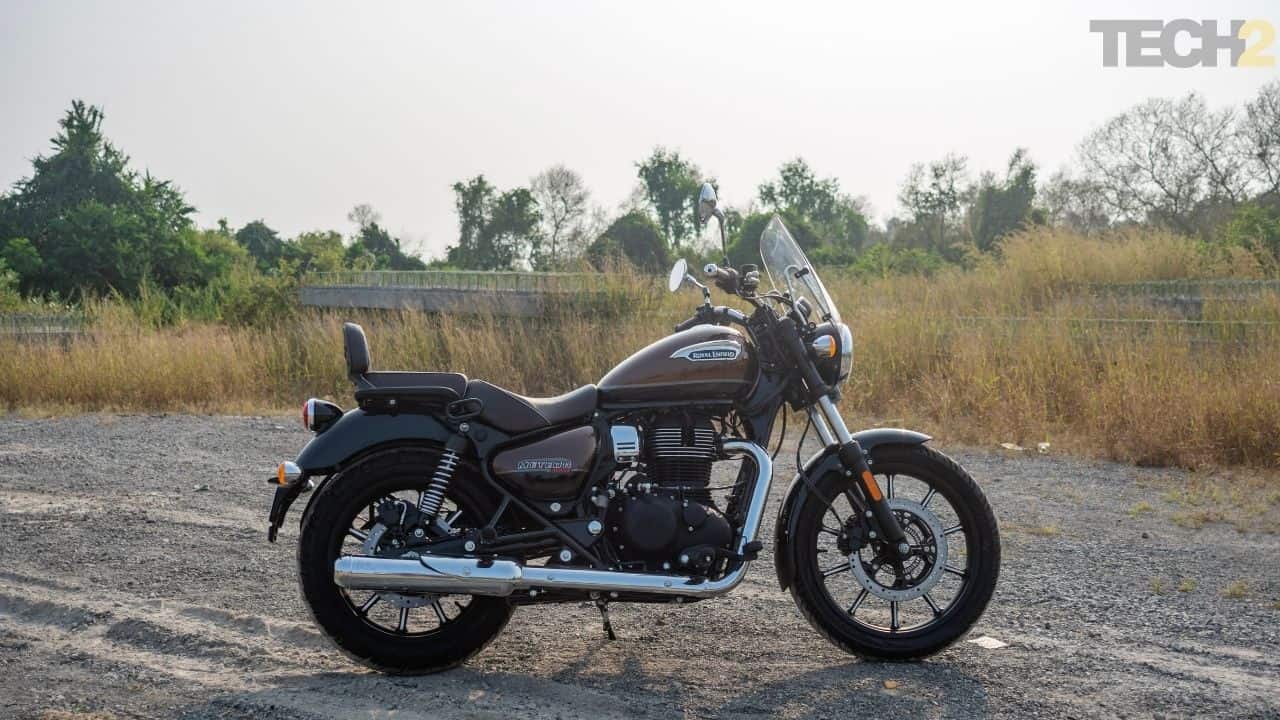
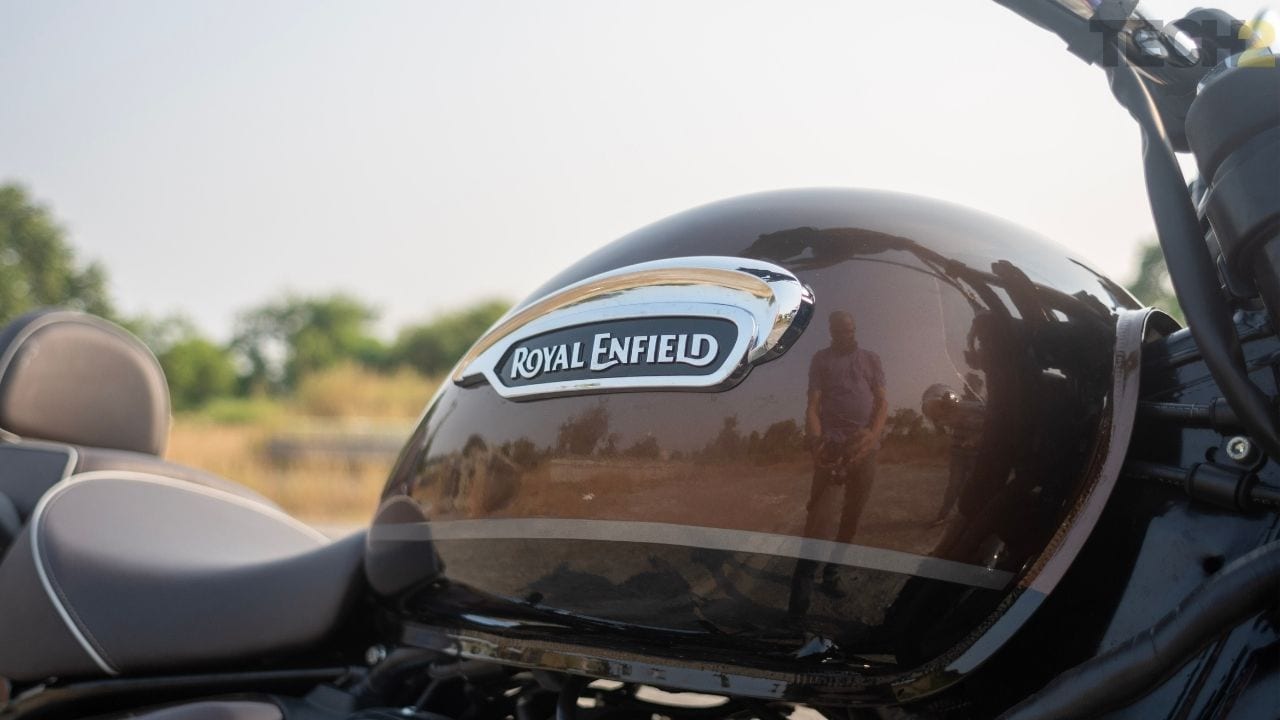

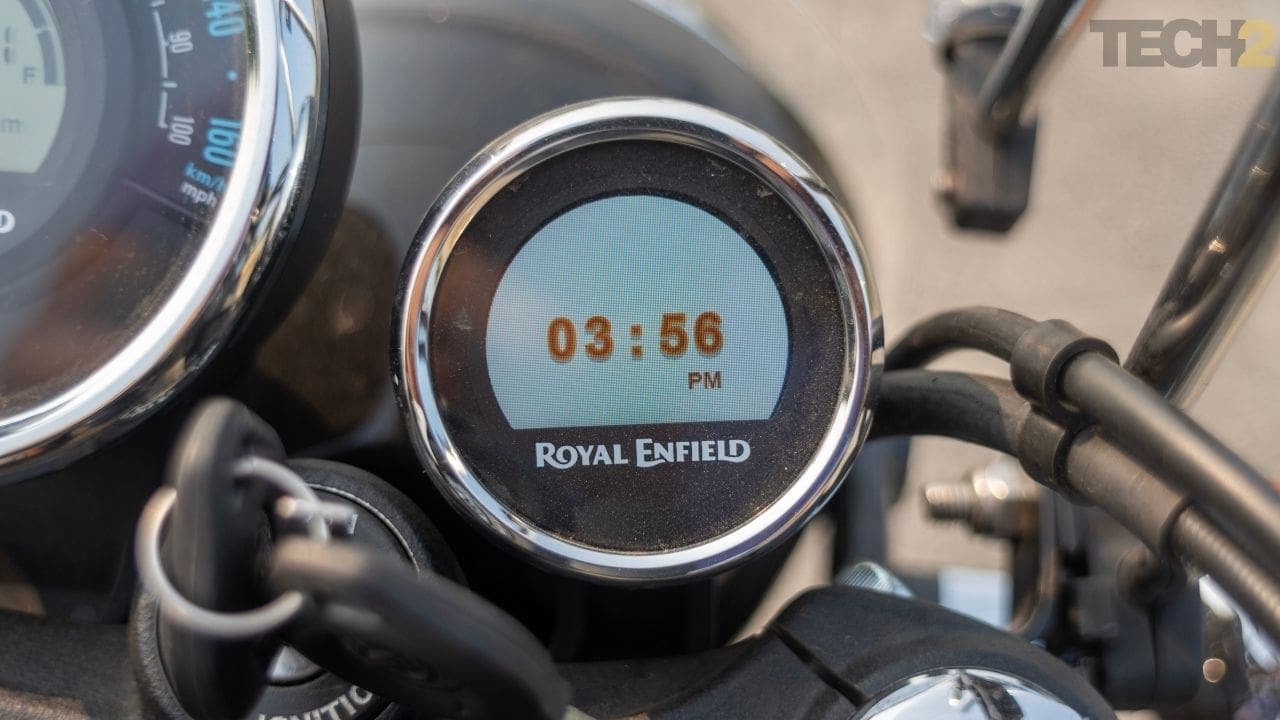
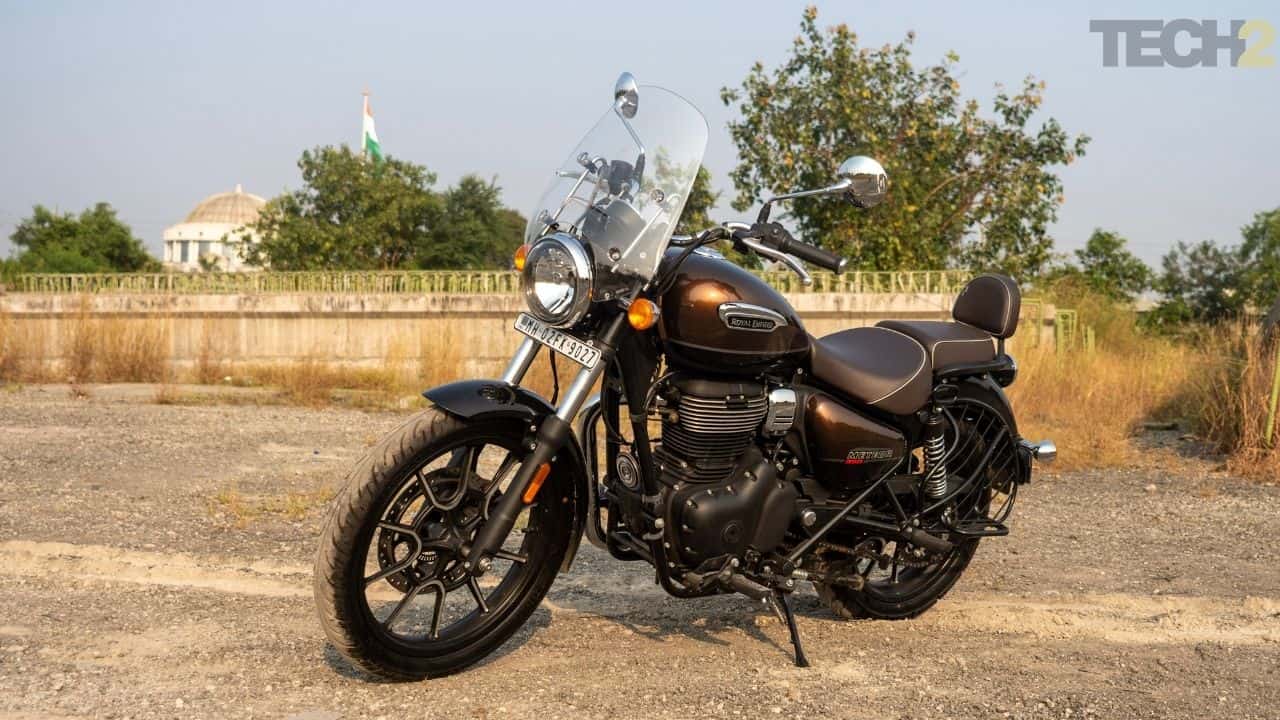
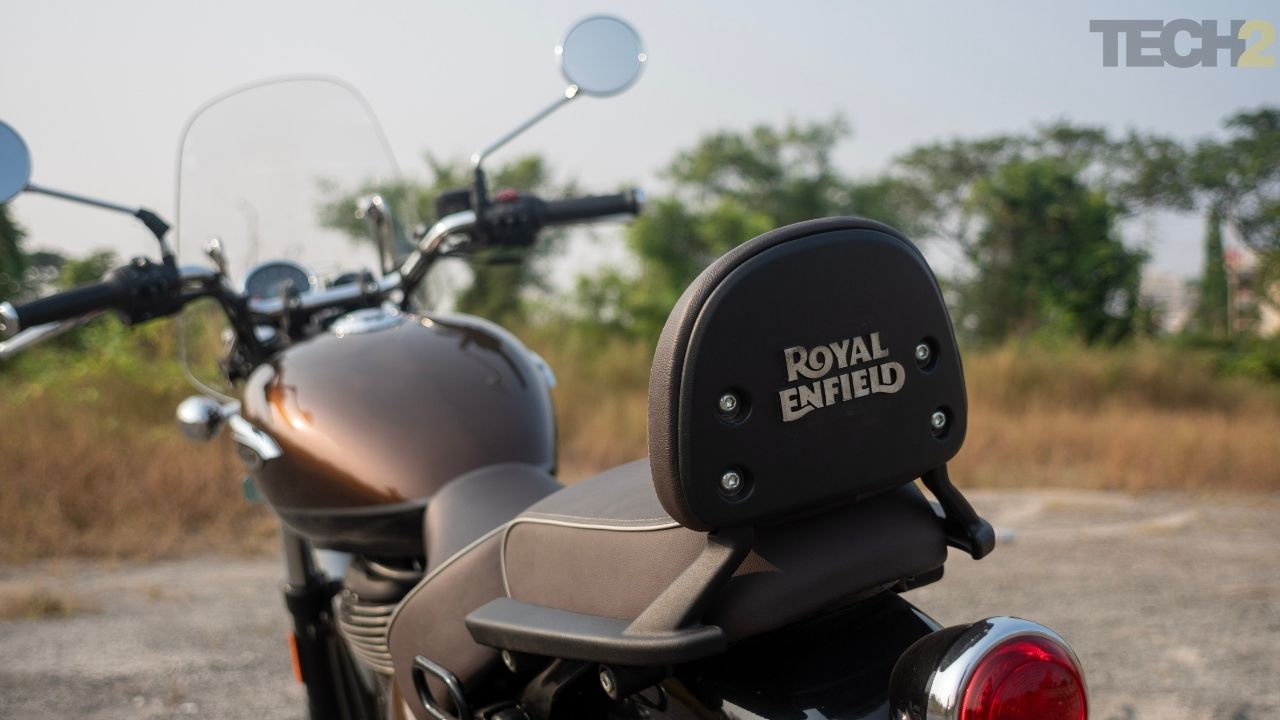
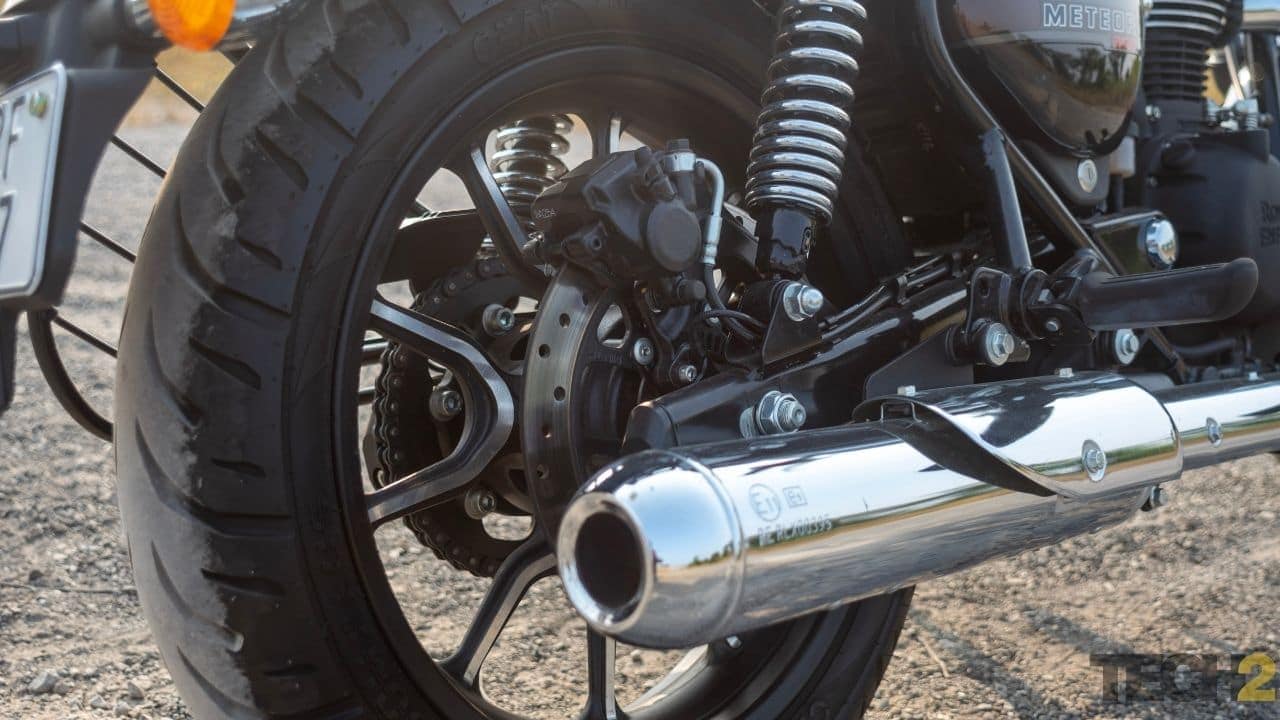
Post a Comment